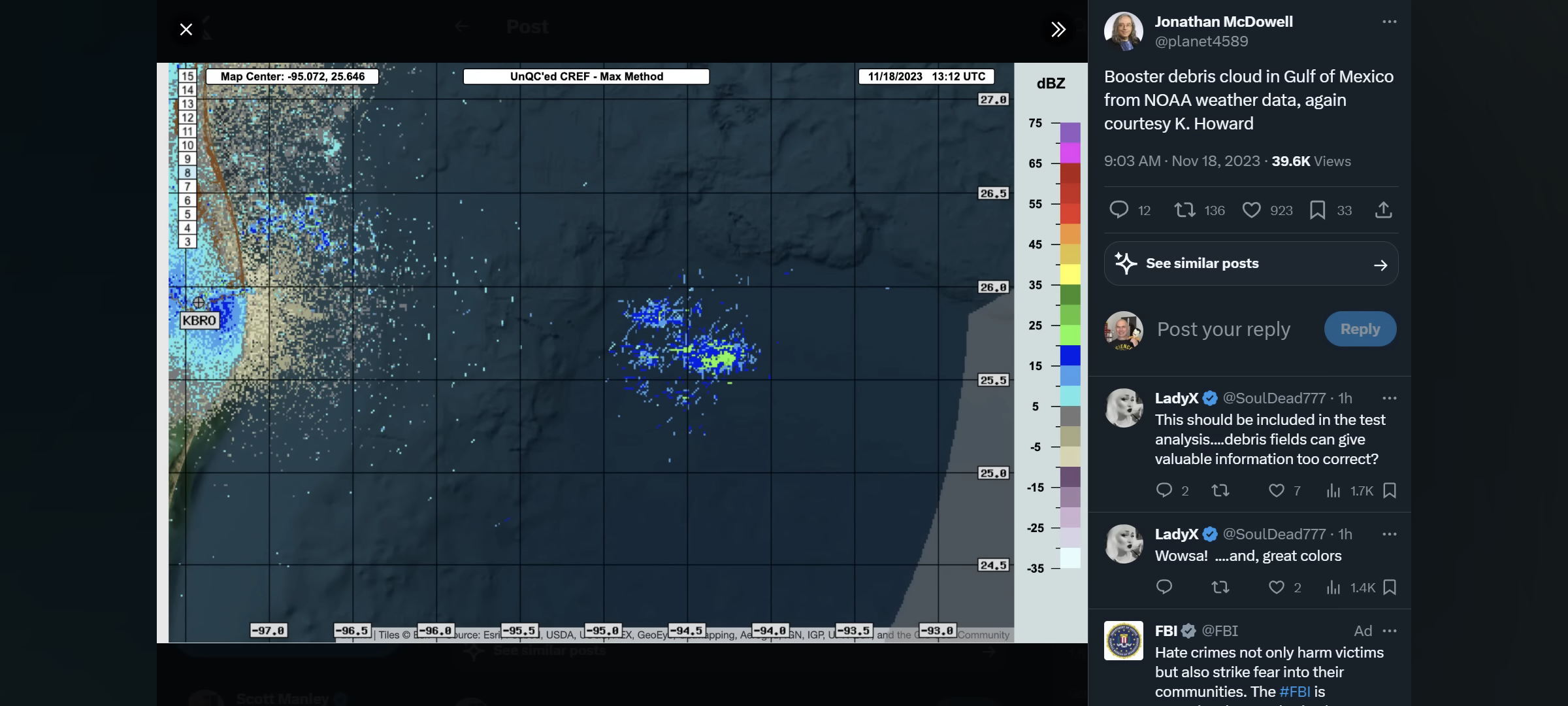





I’ve been a big sci-fi guy and have loved following the devolopments in space in the last few years. I watched all the early spacex landing attempts and have been quite interested in starship progress. I started having thoughts about pollution and sustainably with the launch of starlink. We’re going to have thousands of satellites going through a revolving door of launch and de-orbit. But it’s ^okay because they’re all “just going to burn up on reentry”? So that’s pretty much like taking your TV, a bunch of other electronics and some solar panels and throwing them in a bonfire? Over and over and over? And that’s okay?
I was exited for starship because that uses methane and that’s good, right? When it burns it just exhausts water vapour, right? Except when it vents on the pad after an abort or test. Except when an engine doesn’t light and it’s just pumping that methane (and o^2) out the engine like a fire hose. Except when it RUD’s at altitude. Then it’s injecting methane, a decidedly worse global warming gas then co^2 into the upper atmosphere. During the last starship test the cloud released showed up on weather radar.


To me, it’s starting to look like by the time we get to Planet B, Planet A will have turned into the same poisoned wasteland.
i’m starting to think maybe we shouldn’t burn tons of fuel for billionaires to be space tourists…
…
regarding starlink, all satellites eventually deorbit and burn up in the atmosphere… but yeah it’s the quantity and time frame
The only difference between “burn up on reentry” and “burn up in a bonfire” is altitude. I’ll call the police of my neighbor is burning TVs in their backyard every other day.
like i said, quantity and frequency…
if your neighbor burned a tv in a bonfire every 3 years, and used that tv to answer mysteries of the universe and had to burn it to do that… you’d be okay with it.
The starlink constellation is-
Nearly 12,000 satellites are planned to be deployed, with a possible later extension to 42,000.
If they last 5 years that’s 2400-8400 deorbiting per year. These aren’t the ones “answering the mysteries of the universe” these are the ones selling internet access.
From the article-
plunge through the atmosphere and disintegrate, leaving a stream of pollutants in their wake. Although scientists do not yet know how this will influence Earth’s environment, Dr. Ross thinks that it will be the most significant impact from spaceflight.
well i was contrasting how say, the hubble telescope is a worthwhile satellite that will eventually burn up in the atmosphere, while starlink is wasteful…
Hubble is so far away it won’t reenter for a very long time. And that’s 1 versus 12000.
what is your point?
my point is you’re agreeing with me a lot but misinterpreting me entirely… so you’re trying to argue with me.
…
i’ll repeat my point reeeeeally simply:
yes, starlink wasteful, bad satellites.
some satellites good, like hubble.
Starlink only answers the mysteries of Google but I agree with your frequency point. The satellites burning up in the atmosphere release an inconceivable fraction of the total emissions the global economy releases into the atmosphere.
well i was contrasting how say, the hubble telescope is a worthwhile satellite that will eventually burn up in the atmosphere, while starlink is wasteful…
Before you call it wasteful, consider the people who now can use it as a proper link to modern society… Rural Canadians in particular like myself, and others in rural areas around the world.
Canada is famous for its poor quality and expensive telecom services, and before Starlink I paid the same amount for a 1mbps 3g connection, 20gb cap, high ping and marginally usable uptime.
Starlink is bringing modern connectivity to huge areas of the world that were underserved, and breaking local monopolies while it does so. If some satellites have to burn up to do so, compare it to all the e-waste here on the ground created just for entertainment purposes and at least it’s serving a valid purpose.
i have considered that, and it does serve a very good purpose there…
but still, launching a shitload of satellites wastes a lot of fuel and energy, and deorbiting them is rather wasteful.
im sure the same thing could be done without treating satellites like kleenex…
one of those things where profit and preserving the environment clash.
“Fortunately” the amount of methane vented in a test or RUD is tiny compared to the vast and mostly undocumented amounts leaked from CNG infrastructure globally.
Really we should fix that especially since we’re talking about limiting emissions from cows while pipelines and wells are quietly leaking all day, every day.
Also the losses of high GWP refrigerants like the incredibly common R134a which is just swept under the rug. It was used as the blowing gas for spray foam for decades, a large proportion of the total weight of a canister was propellant, while simultaneously we were told to recover every gram during service on a refrigeration unit due to high GWP…
However at least we can feel ok about the insignificant amount of methane vented from modern rockets, and they do try to flare most losses on the ground or get it in the flight termination explosion.
I’m not sold on the argument that it’s okay to do this bad thing because other things are worse. No cows are farting in the stratosphere, the article is mostly about high altitude emissions being significantly worse. None of that cloud that showed up on radar was on fire.
I agree that they have to do better. That cloud was likely a flameout that blew methane out before termination when the oxygen ran low.
I consider that these tests have to have some tolerance for failure as the finished product shouldn’t result in any venting except in an accident.
The alternatives like keralox, solid fuel or hypergolics have worse emissions in actual operation and hydralox wastes vast amounts of energy refining and chilling liquid hydrogen, so getting the methalox cycle running will be a net benefit once testing is complete.
Indeed, they’re all bad. If they manage to meet the design brief and have starship launching daily the ‘drop in the bucket’ argument will quickly lose its strength.
Those clouds were from the booster and then the ship exploding, the booster was supposed to return to the landing site and the ship was supposed to fly around to Hawaii. They were far from empty as evidenced by the clouds on the radar. Engine cut off does indeed leak fuel, you can see it on the video. Same as at startup. Spacex would have to tell us how much.
I find it very concerning since I fully expect spacex to pull it off and get these things launching as regularly as airplanes. I’ve soured on the hand waving it off as necessary to the Progress Of Man. It’s looking more like this is all for the Progress Of One Man’s Pocket Book.
I posted with a gift link, so people shouldn’t be hitting the paywall at this point.
Oops! Force of habit.